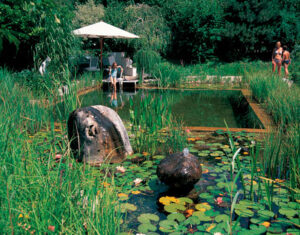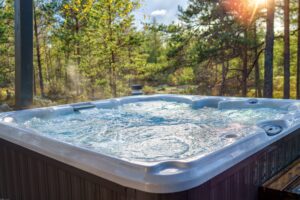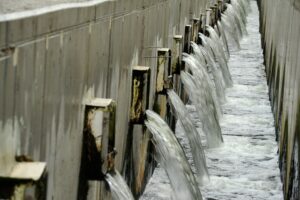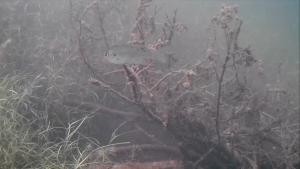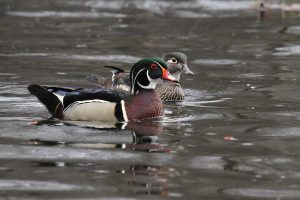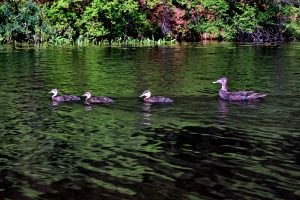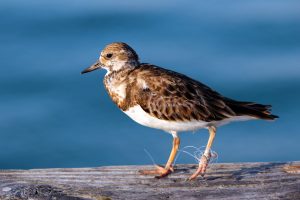by Paige Jessup, Climate Resilience Intern There are a lot of concerns when it comes to standard pools and hot tubs, such as their cost and health impacts. What about their environmental impacts? Most hot tubs and pools contain chlorine, bromide, salt, and algaecides which can be harmful to the environment, especially when not disposed of properly. Ultraviolet Light A great alternative to chlorine is ultraviolet light in conjunction with hydrogen peroxide which has been shown to be very ... Read More
Hot Tubs, Pools, and Freshwater: How to Properly Drain Your Water
by Paige Jessup, Climate Resilience Intern Improperly draining your hot tub or pool can not only result in large fines but can also potentially result in the wastewater ending up in local freshwater bodies and making them inhabitable for some freshwater species. Most municipalities have guidelines for disposing pool or hot tub water, which can also be defined as “wastewater” or “greywater”. It is important to check with your municipality bylaws, provincial building codes, or your public ... Read More
Saltwater Pools, Hot Tubs, and Freshwater: Is this the Best Alternative?
by Paige Jessup, Climate Resilience Intern Many pool and hot tub owners want to get away from the harsh chemicals like chlorine, bromide, and algaecides by switching to saltwater. Using saltwater is appealing because it is believed to be gentler on skin, hair, eyes, and swimwear, and pool-grade salt costs less to maintain than a chlorine pool. In contrast, salt water is corrosive to metal and natural stone, costs more to install, uses more energy to run and keep clean, and could also ... Read More
Best Practices for Municipalities: Reducing Pollution from Pools and Hot Tubs
by Paige Jessup, Climate Resilience Intern Wastewater Management Planning Without a reliable place to dispose of contaminated water, all other best management practices will not have the maximum effort they could. That is why it is important for a municipality to develop a Safe and Reliable Wastewater Treatment System. In order to have a successful wastewater treatment plant upgrade, municipalities should consider: Developing a long-term vision. Engaging with a wide range of decision ... Read More
How is Your Pool Affecting Freshwater Ecosystems?
by Paige Jessup, Climate Resilience Intern Pool and hot tubs are wonderful for recreational activity, aerobic activity and physical therapy, relaxation, and social gatherings. However, they may not be so wonderful for your local freshwater. Pools and hot tubs contain chlorine, bromide, salt, and algaecides which can be dangerous to the adjacent environment. Pool and hot tub water that is improperly discharged or improperly treated before being released can end up in different water bodies, ... Read More
A Home for Fish: The Benefits of In-Water Woody Debris
by Jonathan Miller, Riparian Habitat Restoration Intern Freshwater ecosystems such as lakes, rivers, and the smallest of streams are complex environments that support a rich diversity of life. They are home to fish, turtles, macroinvertebrates, and much more. Among the many factors that influence these ecosystems, in-water woody debris plays a large part. In-water woody debris, including fallen trees, branches, roots, and logs, offer habitat benefits for fish, invertebrates, birds, turtles, ... Read More
Wildflower Gardens: Petal-Powered Machines of Change
by Ty Fischer, Freshwater Health Coordinator Certain environmental actions that we can take have much more profound impacts than we might realize, stretching far beyond the immediate spatial or temporal scale to touch entire communities. Creating a wildflower garden is the perfect example of such an action. With just a few hours of work, almost anyone can create a space that directly supports a special type of insect and animal relied upon by most of the plant kingdom to reproduce: ... Read More
The Way Forward for People and Waterfowl
by Christopher Dennison, Municipal Policy Intern In the previous blog, we discussed the importance of shoreline land-use practices that maintain specific habitat characteristics (namely the planting and maintenance of native vegetation) to support waterbirds. But how can one ensure that the shoreline vegetation chosen will be appropriate for local species? Indeed, the type of shoreline vegetation that is planted and/or maintained on a shoreline plays an important role in habitat selection ... Read More
Waterfowl on the Shore
by Christopher Dennison, Municipal Policy Intern The wellbeing of waterbirds is naturally intertwined with the health of shoreline and riparian ecosystems; the Ribbon of Life that surrounds our freshwater lakes and rivers. In North America, ecologists have posited that the riparian zone (the transitional area of land directly adjacent to a watercourse) supports a much higher diversity of nesting birds than uplands due to specific habitat characteristics (Sanders & Edge, 1998; ... Read More
The Haunting Truth of Ghost Gear and Shoreline Garbage
by Alana Coulombe, Education programs administrator You have finally landed the big catch and then snap! The line breaks. Frustrated, you take a moment to think about what could have been, the photos you could have taken. You think nothing of the interaction except that you need a new line and bob. This interaction is just one of millions that happen across Canada each year. It exemplifies the reality of many environmental issues: collectively, our actions are having a disastrous impact ... Read More
- « Previous Page
- 1
- 2
- 3
- 4
- …
- 18
- Next Page »

